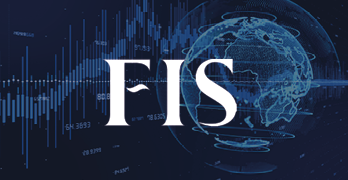FBX Index July: Looking forward

June has been earmarked by some as the time when container markets have finally come under genuine pressure, with the FBX Global Average dropping down -8.63% since the start of the month. The big driver for forward market prices was supposed to be linked to the reopening of Shanghai, a price bump that has failed to materialise. On 8 June, The Port of Shanghai had already reported it had recovered up to 90% of its pre-Lockdown volumes, and the return of what was a reported backlog of up to 260,000 TEUs worth of physical capacity requirement failed to lift prices at the start of the month.
On the Transpacific quite the opposite has happened. FBX01 China/East to North America West Coast collapsed through June, with the Cal23 contract starting relatively high at the start of the month at $10,350/FEU, since collapsing 24.51% to $7,850/FEU. Much of the collapse in prices has been linked to a substantial drop off in demand – inventories for retailers in the US seem to remain quite full, draining the requirement to move cargo across the Pacific in the same manner as we saw in 2021. Even with this move the Cal23 still sits a clear $5,253/FEU above the Cal20 settlement price (Cal20 settled at $2,597.25/FEU). This is despite aggressive blank sailings by ocean liners in an attempt to support price levels.
On a shorter basis, individual months inside of 2022 have also followed this trend down more aggressively, with the FBX01 Aug22 down 26.41% since the start of June. Relative value in the curve on the back of a collapsing spot price has drawn in buyers looking to hedge against any summer demand peak,FBX03 China/East Asia to North America East Coast Aug22trading at FIS at $10,000 earlier this week.
On a shorter basis, individual months inside of 2022 have also followed this trend down more aggressively, with the FBX01 Aug22 down 26.41% since the start of June. Relative value in the curve on the back of a collapsing spot price has drawn in buyers looking to hedge against any summer demand peak,FBX03 China/East Asia to North America East Coast Aug22trading at FIS at $10,000 earlier this week. Despite this value, there are plenty of sellers in the market. However, the selling interest is no longer only long-dated inside of 2023 and 2024. Prior to the collapse of spot prices, selling interest was looking to hedge against the impact of the huge number of new builds hitting the water in 2023 and 2024, making it challenging for smaller buyers to take advantage of the futures market.
As a sign of how well priced futures appear, FBX11 Q4(22) has only shed $50 from its value since the start of the month. FBX13 China/East Asia to the Mediterranean has been a bit more dynamic after pricing up higher late in May, the Cal23 hitting $9,300/FEU.
On the Asia-Europe/Mediterranean routes, prices have been classically more progressive. FBX11 China/East Asia to North Europe has pulled back on forward prices alongside the declining spot price, FBX11 Cal23 down 3.75% since the beginning of June after trading at $7,900, then $7,800, and currently valued at $7,700/FEU. As a sign of how well priced futures appear, FBX11 Q4(22) has only shed $50 from its value since the start of the month. FBX13 China/East Asia to the Mediterranean has been a bit more dynamic after pricing up higher late in May, the Cal23 hitting $9,300/FEU. However, in line with pressure seen by the rest of the market Cal23 has also dropped back on value by 8.6%, sitting offered at $9,000, an enormous 30.19% discount from the current spot price of $12,893. This turn in the market provides buyers with an opportunity to hedge on futures, especially since it has been reported market-wide that spot prices have started to pass through contract rates agreed at the start of the year.
Looking forward, eyes will be on how unstable physical contracting is, after a push for mutual contract stability by ocean liners looking to lock in their fortunes from 2020-2021. Container freight has a terrible track record of this, with price declines usually leading to widescale default of physical contracts. Price declines have also driven adoption of index-linking once again, with many of the new form of two to three year long-term contracts factoring in a floating price element for 2023 and 2024. And, whilst bunker prices have been overwhelmingly bullish since the Russia Invasion of Ukraine, this has appeared to do little to support spot prices.
About Peter Stallion, Head of Air and Containers, Freight Investor Services
Peter Stallion heads up the Air and Container Freight desks at FFA brokerage Freight Investor Services. He started his career in air freight chartering, and has a passion for emerging risk management markets and the logistics industry.
Receive monthly container market reports direct to your inbox.